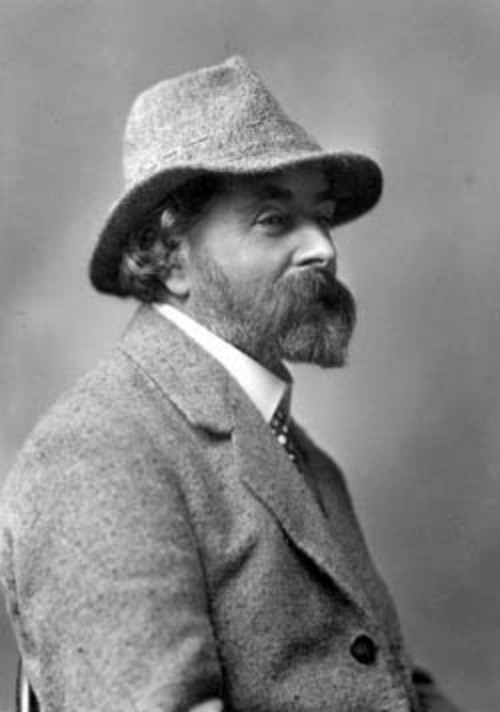Early Life and Education
Born in the Isle of Man to Scottish parents, Archibald Knox received his education at Douglas Grammar School before attending Douglas School of Art. During his studies, he developed a deep appreciation for Celtic art, drawing particular inspiration from the medieval stone crosses found throughout the island.
Career and Artistic Achievement
Knox began his career as a teacher at Douglas School of Art. He later moved to mainland Britain, teaching at Redhill, Surrey (1897) and Kingston-upon-Thames Art School (1899). While his watercolors, graphic designs, and typefaces earned him recognition, it was his metalwork designs for Liberty’s department store that brought him international fame.
His artistic style was revolutionary for its time. Upon his death in 1933, The Times praised him as “an artist of poetical sensibilities” and “one of the pioneers in breaking away from naturalistic and ‘period’ designs,” noting his contribution to bringing decorative art into the modern era.
Wartime Service at Knockaloe Internment Camp (1914-1919)
After returning to the Isle of Man in 1913 to teach at Douglas School of Art, Knox was recruited to serve at the Knockaloe Internment Camp during World War I. He headed the censorship department, overseeing the inspection of internee correspondence. In his own words, his department processed 1,207,000 parcels between November 9, 1914, and October 25, 1919.
Censorship Challenges
Knox documented numerous creative attempts by internees to receive forbidden communications:
- Newspapers rolled and concealed in tins labeled as preserved meat
- Messages baked into loaves of bread
- Documents hidden in tins of fat
- Papers sewn into chest protectors
- Information concealed in cabbage leaves within sauerkraut
- German newspapers disguised as “tobacco-substitute”
He noted that news about major events, such as Lord Kitchener’s death and the Battle of Jutland, reached the camp within 10 days through these smuggling attempts.
Later Works and Legacy
During his spare time at Knockaloe, Knox worked on “The Deer’s Cry,” an illuminated manuscript inspired by a hymn attributed to St. Patrick. This work reflected his Anglo-Catholic beliefs and showed influences from the Book of Kells and Book of Durrow.
After the war, Knox continued his artistic work, designing:
- Gravestones, including the monument for Manx author Hall Caine
- Local war memorials, which incorporated religious symbolism influenced by his wartime experiences
Historical Significance
As noted by Manx writer T.E. Tuckfield in 1916: “As T.E. Brown has given the poetry of your people, so has Mr. Knox given in watercolor the poetry of your skies, shores, and buildings, painted your boats, trees, and bridges, flecked with sunlight and shade as no other man has painted them.”
Knox’s work represented a unique fusion of Celtic revival art, modern design principles, and deep spiritual conviction. His contributions to the Art Nouveau movement and his service during World War I mark him as a significant figure in both artistic and historical contexts.
